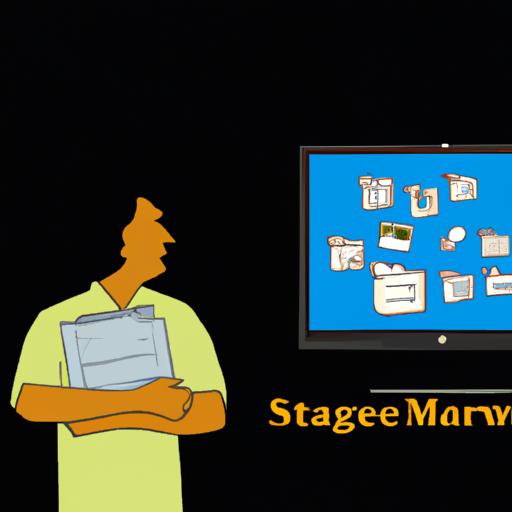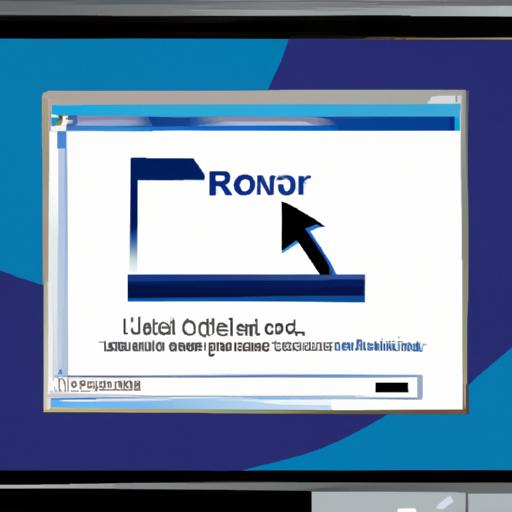In today’s fast-paced business environment, managing assets efficiently is crucial for success. Whether you are a small startup or a large corporation, keeping track of your assets and optimizing their utilization can significantly impact your bottom line. Fortunately, there are numerous free software options available that can simplify and streamline asset management processes.
Importance of Efficient Asset Management
Effective asset management is the key to maximizing productivity and minimizing costs. It involves tracking, organizing, and maintaining all physical and digital assets within an organization. From equipment and machinery to software licenses and intellectual property, every asset holds value and needs to be effectively managed to avoid unnecessary expenses, prevent loss, and ensure compliance.
Benefits of Using Software for Asset Management
Gone are the days of manual record-keeping and cumbersome spreadsheets. Asset management software offers a range of benefits that can revolutionize your business operations:
-
Improved Accuracy and Productivity: By automating asset tracking and management processes, software eliminates human error and reduces time-consuming manual tasks. This frees up valuable resources, allowing your team to focus on more strategic initiatives.
-
Optimized Asset Utilization: With software, you can easily track asset location, availability, and maintenance schedules. This enables you to make informed decisions about asset allocation, utilization, and maintenance, ensuring optimal efficiency and reducing downtime.
-
Enhanced Security and Compliance: Asset management software provides robust security features, allowing you to secure sensitive information and track access to critical assets. It also helps maintain compliance with industry regulations and audit requirements.
Overview of Free Software Options Available
Now that we understand the importance and benefits of asset management software, let’s explore some of the top free options available:
-
Software A: With its user-friendly interface and comprehensive features, Software A offers a powerful solution for asset tracking and maintenance. It allows you to categorize assets, schedule maintenance tasks, and generate insightful reports.
-
Software B: Ideal for small businesses, Software B provides a simplified yet effective asset management system. It offers basic tracking capabilities, customizable fields, and intuitive reporting features.
-
Software C: Designed for scalability, Software C caters to the needs of growing businesses. It offers advanced features such as asset lifecycle management, automated workflows, and integrations with other business tools.
By leveraging these free software options, you can kickstart your asset management journey without breaking the bank.
In the next section, we will delve into the key features of free asset management software and how they can help streamline your operations. Stay tuned!
Key Features of Free Asset Management Software
When considering free asset management software options, it’s essential to understand the key features they offer. Let’s explore the functionalities that can make a significant difference in streamlining your asset management processes.
Tracking and Organizing Assets
One of the primary purposes of asset management software is to help you track and organize your assets efficiently. Look for software that allows you to create a centralized database where you can record and categorize all your assets. This feature enables you to easily locate assets, track their movement within your organization, and ensure they are in the right hands when needed.
Managing Asset Lifecycle
Effective asset management involves monitoring an asset throughout its entire lifecycle, from acquisition to disposal. Choose software that enables you to track asset depreciation, schedule maintenance tasks, and manage warranty information. With these capabilities, you can proactively address maintenance needs, prolong asset lifespan, and make informed decisions about asset retirement or replacement.
Generating Reports and Analytics
To gain valuable insights into your asset performance and utilization, opt for software that offers robust reporting and analytics features. Look for customizable reporting templates that allow you to generate comprehensive reports on asset usage, maintenance history, and financial data. These reports can help you identify trends, optimize asset allocation, and make data-driven decisions to improve efficiency.
Integrations with Other Tools
Consider software that seamlessly integrates with other business tools you use, such as accounting software, procurement systems, or help desk solutions. Integration eliminates manual data entry and facilitates the flow of information across different departments. This ensures accurate and up-to-date asset records, streamlines workflows, and enhances collaboration between teams.
User-Friendly Interface and Ease of Use
While evaluating asset management software, prioritize user-friendliness and ease of use. Choose software with an intuitive interface that requires minimal training for your team to adopt. A user-friendly system ensures smooth onboarding, reduces the likelihood of errors, and increases user satisfaction, ultimately leading to higher productivity.
With these key features in mind, you can make an informed decision when selecting the best free asset management software for your organization. In the next section, we will compare and evaluate some of the top free software options available. Stay tuned to find the perfect fit for your asset management needs!
Comparison of Top free software for asset management
When it comes to choosing the right asset management software for your business, it’s essential to evaluate different options and select the one that aligns with your specific needs. Let’s take a closer look at some of the top free software available in the market and compare their features, pros, and cons.
Software A
- Features: Software A offers a comprehensive set of features that enable efficient asset tracking and maintenance. It allows you to categorize assets based on various criteria, schedule recurring maintenance tasks, and generate detailed reports for analysis.
- Pros: The user-friendly interface of Software A makes it easy for both beginners and experienced users to navigate and utilize its functionalities effectively. Additionally, it offers customizable fields and notifications for streamlined asset management.
- Cons: While Software A provides robust asset tracking capabilities, it may lack some advanced features that larger organizations may require. Additionally, the free version might have limitations on the number of assets that can be managed.
Software B
- Features: Software B offers a simplified asset management system, making it ideal for small businesses with basic tracking needs. It allows you to record asset details, track their location, and generate basic reports.
- Pros: The simplicity of Software B makes it easy to set up and use, even for those with limited technical expertise. It offers customizable fields, allowing you to tailor the software to your specific asset management requirements.
- Cons: Software B may lack some advanced features that larger organizations or those with complex asset management needs might require. It may also have limitations in terms of scalability and integration with other business tools.
Software C
- Features: Software C is designed to cater to the needs of growing businesses. It offers advanced features such as asset lifecycle management, automated workflows, and integrations with other business tools.
- Pros: The scalability of Software C makes it suitable for organizations that anticipate growth and expansion. Its powerful features enable efficient asset tracking, maintenance, and utilization, providing valuable insights for decision-making.
- Cons: Due to its advanced functionalities, Software C may have a steeper learning curve compared to other options. It may also require more technical expertise for implementation and customization.
Evaluation Criteria for Choosing the Right Software
When evaluating asset management software, consider the following criteria to make an informed decision:
- Scalability: Assess whether the software can grow with your business and accommodate increasing asset volumes.
- User-Friendliness: Consider the ease of use and intuitive interface to ensure smooth adoption and minimal training requirements.
- Integration Capabilities: Determine if the software can seamlessly integrate with other tools or systems your organization relies on.
- Customization Options: Look for software that allows you to tailor fields, workflows, and reports to match your specific asset management processes.
- Support and Updates: Check the availability of technical support and regular software updates to address any issues or security vulnerabilities.
By carefully comparing these software options and evaluating them against your specific needs, you can select the most suitable free asset management software for your organization. In the next section, we will explore how to choose the best software and provide implementation best practices. Stay tuned!
How to Choose the Best Free Software for Asset Management
When it comes to selecting the best free software for asset management, it’s important to consider several factors that align with your organization’s needs. Here are some key considerations to help you make an informed decision:
Assessing your Organization’s Needs and Requirements
Before diving into the vast array of software options, take the time to assess your organization’s specific needs and requirements. Consider the size of your business, the number and type of assets you manage, and the complexity of your operations. Identifying your unique needs will help narrow down the software options that align with your goals.
Considering Scalability and Future Growth
While free software may meet your current asset management needs, it’s crucial to consider scalability and future growth. Your business may expand, and your asset management requirements may evolve over time. Look for software that can adapt and scale alongside your organization, allowing for seamless integration of additional assets and users as your business grows.
Evaluating User Reviews and Ratings
One of the best ways to gauge the effectiveness and user-friendliness of asset management software is by evaluating user reviews and ratings. Read feedback from other organizations that have used the software to get a sense of their experiences. Look for reviews that highlight the software’s strengths and weaknesses, paying particular attention to aspects that are important to your specific needs.
Exploring Additional Paid Features and Upgrades
While the focus is on free software, it’s worth considering whether there are additional paid features or upgrade options available. As your business expands, you may require advanced functionalities or integrations with other tools. Take the time to explore the paid features and pricing plans offered by the software providers to ensure that they align with your long-term goals.
By carefully assessing your organization’s needs, considering scalability, evaluating user reviews, and exploring potential paid features, you will be well-equipped to choose the best free software for asset management that suits your business requirements.
In the next section, we will explore the implementation and best practices for utilizing free asset management software effectively. Let’s dive in!
Implementation and Best Practices for Free Asset Management Software
Successfully implementing and utilizing free asset management software can significantly enhance your organization’s efficiency and productivity. To ensure a seamless transition and maximize the benefits of these tools, follow these best practices:
Setting up the Software and Importing Existing Data
-
Evaluate your asset data: Before setting up the software, assess your existing asset data. Cleanse and organize it to ensure accurate and relevant information.
-
Choose the right software: Select a free asset management software that aligns with your organization’s needs and requirements. Consider factors such as scalability, user-friendliness, and integration capabilities.
-
Customize asset categories and attributes: Tailor the software to your specific asset management needs by configuring asset categories and attributes. This allows for efficient tracking and reporting.
-
Import existing data: Once the software is set up, import your existing asset data. Ensure that the information is accurately mapped to the relevant fields in the software.
Configuring Asset Categories and Attributes
-
Identify and define asset categories: Determine the different types of assets your organization manages and create corresponding categories. For example, categories could include IT equipment, vehicles, or office furniture.
-
Define relevant attributes: Specify the attributes that are important for each asset category. This may include serial numbers, purchase dates, warranty information, or maintenance schedules. Customizing attributes ensures you capture the necessary data for effective asset management.
Establishing Security and User Access Controls
-
Implement access controls: Set up user roles and permissions within the software to control who can view, edit, and delete asset data. Restricting access ensures the security and integrity of sensitive information.
-
Secure data backups: Regularly back up your asset data to prevent loss in case of system failures or data breaches. Explore cloud storage options or create offline backups to safeguard your valuable asset information.
Training Employees and Promoting Adoption
-
Provide comprehensive training: Educate your employees on how to effectively use the asset management software. Offer training sessions, create user guides, or provide access to online tutorials to ensure a smooth adoption process.
-
Encourage adoption and accountability: Emphasize the benefits of the software to your employees. Promote a culture of accountability by encouraging them to accurately update asset information and report any issues or changes.
Regular Maintenance and Updates
-
Perform regular data audits: Conduct periodic audits to verify the accuracy and completeness of your asset data. Remove outdated or duplicated entries and ensure all relevant information is up to date.
-
Keep software up to date: Stay updated with the latest software releases and updates. Regularly install patches and new versions to benefit from improved features, bug fixes, and enhanced security measures.
By following these implementation best practices, you can effectively harness the power of free asset management software and optimize your organization’s asset management processes. In the next section, we will conclude our exploration of free software for asset management.
Conclusion: Unlocking Efficiency with Free Asset Management Software
In today’s competitive business landscape, efficient asset management is paramount for success. By utilizing free software for asset management, you can streamline your operations, optimize resource utilization, and enhance productivity.
Throughout this article, we have highlighted the importance of efficient asset management and the benefits of using software to achieve it. We explored the wide range of free software options available, such as Software A, Software B, and Software C, each offering unique features suited for different business needs.
Implementing asset management software provides several advantages, including improved accuracy, enhanced productivity, optimized asset utilization, and enhanced security and compliance. With automated tracking, detailed reporting, and user-friendly interfaces, these software solutions empower businesses to make informed decisions, reduce downtime, and cut unnecessary expenses.
When choosing the best free software for asset management, it is crucial to assess your organization’s specific needs, scalability requirements, and user reviews. Take the time to explore different options, test their functionalities, and consider any additional paid features or upgrades that may further enhance your asset management capabilities.
By centralizing asset data, automating workflows, and maintaining accurate records, you can unlock the full potential of your assets and drive your business forward. Embrace the power of technology and leverage free asset management software to gain a competitive edge in today’s dynamic market.
Remember, efficient asset management is not a one-time task but an ongoing process. Regular maintenance, updates, and training are essential for maximizing the benefits of your chosen software. Embrace these practices, adapt to evolving technologies, and continuously fine-tune your asset management strategies to stay ahead of the curve.
Now it’s time to embark on your asset management journey. Explore the free software options available, select the one that aligns with your unique requirements, and witness the transformation it brings to your business operations. Streamline your asset management processes, unlock efficiency, and pave the way for sustainable growth.



